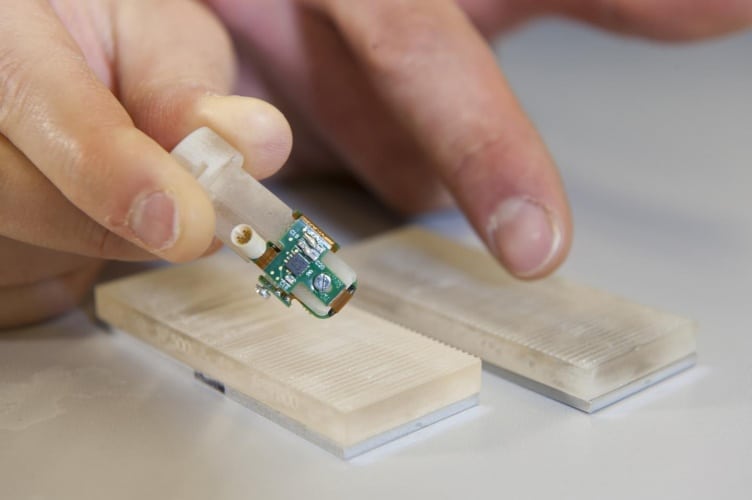The technology, described in the journal eLife, was developed by a team from Ecole polytechnique fédérale de Lausanne (EPFL) in Switzerland and Scuola Superiore Sant'Anna (SSSA) in Pisa, Italy. Nerves in the arm of amputee Dennis Aabo Sørensen were surgically connected to the bionic fingertip, allowing him to distinguish between rough and smooth surfaces.

“The stimulation felt almost like what I would feel with my hand," said Sørensen. "I still feel my missing hand, it is always clenched in a fist. I felt the texture sensations at the tip of the index finger of my phantom hand."
Once Sørensen’s arm was wired up, a machine controlled the movement of the fingertip over pieces of plastic engraved with different patterns, generating an electric signal. This signal was translated into a series of electrical spikes that imitate the language of the nervous system. Sørensen had a 96 per cent success rate in distinguishing between rough and smooth surfaces.
The same experiment was carried out on non-amputees, with fine needles delivering the sensory information from the bionic fingertip to the arm’s median nerve. EEG scans revealed that the same areas of the brain were active as when the subjects were using their own fingers, and the non-amputees were able to identify roughness 77 per cent of the time.
"This study merges fundamental sciences and applied engineering,” said Calogero Oddo of the BioRobotics Institute at SSSA.
“It provides additional evidence that research in neuroprosthetics can contribute to the neuroscience debate, specifically about the neuronal mechanisms of the human sense of touch. It will also be translated to other applications such as artificial touch in robotics for surgery, rescue, and manufacturing."




Project to investigate hybrid approach to titanium manufacturing
What is this a hybrid of? Superplastic forming tends to be performed slowly as otherwise the behaviour is the hot creep that typifies hot...